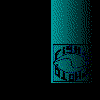














This
period the item is: Shell dwelling cichlids. They are very interesting fishes
because they are still in a faze of the evolution. Very interesting because of
its behavior is
Neolamprologis similis
(BUSCHER, 1992)

This
shell dwelling cichlid out of Lake Tanganyika, formerly called Neolamprologus
sp.aff. multifasciatus and subsequently because of her conspicuous large
eyes Neolamprologus sp. "big eyes", was discovered in the beginning
of the ninety's by Ad Konings, who was able to photograph them at two different
locations in the middle part of the lake; respectively at Bulu point in Tanzania,
and at cap Tembwe in the former Zaire now Congo. A second area of distribution
is situated a little farther to the south at the shore of Congo near Zongwe. From
this location, discovered by K.H. Büscher also originate the specimen used
for the description of the species (1992)
The fish was called so because of
the resemblance with Neolamprologus multifasciatus, her distant and legendary
nephew. The pattern consists of regularly brown stripes that lay in rather equal
distances are visible in the tail fin, the caudal fin, and the most important
part of the head as well. One could see in it the negative of Neolamprologus multifasciatus.
In the last one, the stripes at the caudal-, the dorsal fin and the forehead as
well, fail. The dorsal fin shows a black border and beneath a golden zone, de
ventral fins are bluish in the edge. The adult males measure 5 cm, the females
3 cm
Care:
In their biotope the animals often dwell in an extended and tight
group in de cemeteries of the houses of Neothauma and in cracks in the rocks as
well; because they did not finish the evolution till obligate shell dwelling cichlid,
holes and caves in the rocks are accepted as a home as well.
Nourishment:
The
adult animals can be nourished every day with Daphnia, Artemia, Mysis, Cyclops,
krill from the freezer of the aquarium specialistshop. At the favourable season
oneself also can catch this. Of course self caught and self-frozen nourishment
has a higher nutritional value. Also some green nourishment in form of grind pies
en carrots mixed up with grind flesh of mussels and shrimps suffice extraordinary.
Be careful at feeding enchytrees; make it thrifty considering growing fat.
Conclusion:
Unnecessary
to say that for sure one must not keep them together with other shell dwellers
or even with fishes that in the lake frequent the rock littoral (Julidochromis
or other species of Neolamprologus) that without any doubt would dominate them.
Without any danger they can be kept together with Paracyprichromis nigripinnis
or P.brieni. This would give a very nice view.